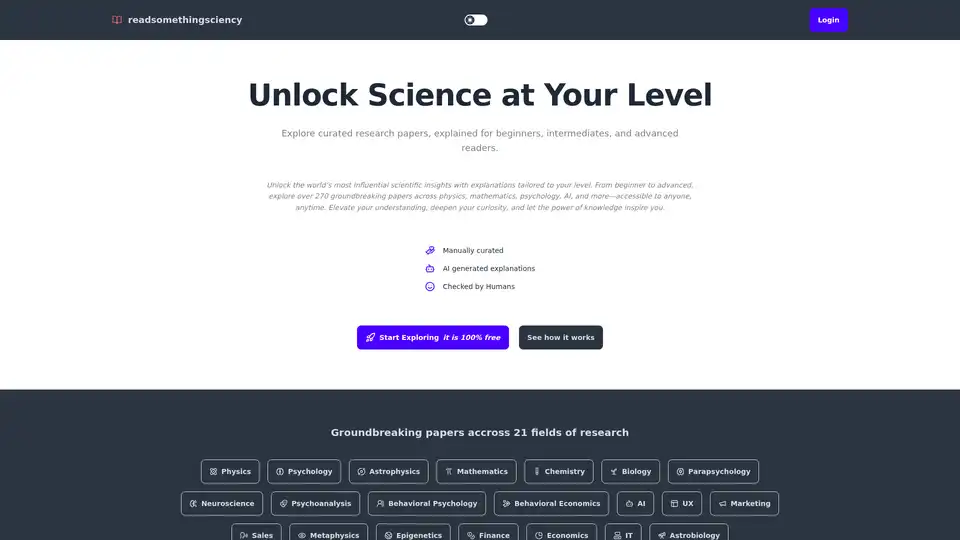
ReadSomethingSciency
Overview of ReadSomethingSciency
What is ReadSomethingSciency?
ReadSomethingSciency is an innovative educational platform that democratizes access to groundbreaking scientific research. Founded by Sylvain Zircher, a multidisciplinary expert in finance, physics, environmental sciences, climate modeling, machine learning, and AI, this free resource curates and simplifies over 270 influential papers across 21 diverse fields. From physics and mathematics to psychology, AI, neuroscience, and even niche areas like parapsychology and astrobiology, the platform uses advanced AI—specifically Large Language Models (LLMs)—to generate clear, engaging explanations tailored to three expertise levels: beginner, intermediate, and advanced.
Unlike traditional academic resources that can feel impenetrable, ReadSomethingSciency bridges the gap between complex original papers and everyday learners. Each explanation is manually curated, AI-generated, and human-checked for accuracy, ensuring reliability without overwhelming jargon. Whether you're a student dipping your toes into relativity or a professional seeking deeper insights into behavioral economics, this platform empowers you to unlock the world's most transformative ideas at your own pace.
How Does ReadSomethingSciency Work?
At its core, ReadSomethingSciency leverages the power of AI to break down dense scientific literature into digestible formats. Here's a step-by-step look at the process:
Curation Process: Sylvain and his team manually select seminal works from renowned thinkers like Albert Einstein, Amos Tversky, and Daniel Kahneman. Papers span historical milestones, such as Einstein's 1905 "On the Electrodynamics of Moving Bodies," which introduces special relativity, to modern explorations like Michael Levin's 2017 work on bioelectric networks in cellular regeneration.
AI-Powered Explanations: Using LLMs, the platform generates summaries and interpretations customized for different levels. Beginners get straightforward overviews, like how gravity in general relativity is spacetime curvature caused by mass and energy. Intermediates dive into key concepts and implications, while advanced users explore technical nuances, methodologies, and broader impacts.
Human Oversight: Every AI output is reviewed by humans to maintain quality, eliminating errors and enhancing clarity. This hybrid approach combines AI efficiency with human insight, making the content both innovative and trustworthy.
User Interaction: Simply visit the site at readsomethingsciency.com, select your expertise level, and start reading. No downloads or installations needed—it's a seamless web experience. Features like random paper selections (three fresh picks per refresh) and structured learning tracks help users discover new ideas effortlessly.
This workflow not only simplifies access but also fosters curiosity, turning passive reading into an interactive journey through scientific discovery.
Key Features of ReadSomethingSciency
What sets this platform apart in the realm of AI paper explanations and accessible science? Here are the standout elements:
Tailored Learning Levels: Choose beginner for foundational concepts, intermediate for balanced depth, or advanced for rigorous analysis. This personalization ensures relevance, whether you're new to a field or an expert refining your knowledge.
Diverse Field Coverage: Spanning 21 areas including astrophysics, chemistry, biology, UX, marketing, sales, finance, economics, IT, and more. Featured papers cover timeless topics like decision framing in psychology or endogenous bioelectric networks in biology.
100% Free Access: No subscriptions or hidden fees—everything is open to all. To manage resources, a simple account creation is required, which helps sustain the platform amid growing demand.
Engaging Exploration Tools: Random selections keep things fresh, while learning tracks weave multiple papers into thematic narratives, ideal for structured study on big ideas like relativity or behavioral economics.
Built with Modern Tech: Powered by tools like Next.js, Supabase, and OpenAI, ensuring a smooth, scalable experience. The platform's design prioritizes usability, with clean interfaces and quick navigation.
These features make ReadSomethingSciency a go-to for LLM summaries and research papers, blending education with technology in a user-friendly package.
Who is ReadSomethingSciency For?
This platform is designed for a wide audience seeking accessible science and scientific research insights:
Beginners and Students: High schoolers, undergrads, or lifelong learners new to topics like AI or physics. It removes barriers, explaining concepts like spacetime relativity without prerequisites.
Intermediates and Professionals: Educators, marketers, or tech enthusiasts wanting practical applications. For instance, UX designers can explore psychology papers on decision-making to inform user behavior strategies.
Advanced Researchers and Experts: Academics or AI practitioners needing quick refreshers or cross-disciplinary connections, such as linking epigenetics to machine learning models.
Curiosity-Driven Individuals: Anyone passionate about knowledge, from finance pros diving into economics papers to hobbyists in metaphysics or astrobiology.
In short, if you're intimidated by original research papers but eager for their wisdom, ReadSomethingSciency is your ideal companion. It's particularly valuable for those in AI-related fields, as it includes dedicated content on machine learning and intelligent systems.
Why Choose ReadSomethingSciency?
In a sea of educational tools, why opt for this one? The answer lies in its commitment to quality and inclusivity. Traditional resources often gatekeep knowledge behind paywalls or dense prose, but ReadSomethingSciency uses AI explanations to make elite science free and approachable. User testimonials, like Sylvain's own journey from struggling with papers to simplifying them via LLMs, highlight its real-world impact.
It aligns with modern learning trends, supporting self-paced education amid busy lives. Plus, by focusing on human-checked AI outputs, it upholds E-E-A-T standards—experience from Sylvain's broad expertise, expertise in curation, authoritativeness through sourced papers, and trustworthiness via verification.
Compared to generic summary apps, it offers specialized tracks and broad coverage, enhancing retention and inspiration. For those searching for the best way to understand research papers, this platform delivers transformative value without the hassle.
How to Use ReadSomethingSciency: Getting Started
Ready to dive in? Follow these simple steps:
Visit the Site: Head to https://readsomethingsciency.com/ and create a free account to access full features.
Select Your Level: Pick beginner, intermediate, or advanced based on your comfort with the topic.
Explore Papers: Browse featured selections, hit the random button for surprises, or follow a learning track for guided progress.
Read and Learn: Engage with explanations that build from basics to insights, perhaps starting with Einstein's relativity papers to grasp time and space relativity.
Track Your Journey: Refresh for new papers or revisit favorites to deepen understanding over time.
Pro Tip: Start with a random selection to spark interest—it's a low-pressure way to discover gems in fields like neuroscience or behavioral psychology.
Practical Value and Real-World Applications
Beyond reading, ReadSomethingSciency has tangible benefits. In education, teachers can use it for lesson planning, pulling AI-generated overviews to spark classroom discussions. Professionals in AI and machine learning benefit from summaries that connect theory to practice, like how bioelectric networks inform regenerative tech.
For marketers and sales teams, papers on psychology and economics provide evidence-based strategies for consumer behavior. Even in finance or IT, insights from economics or metaphysics can inspire innovative thinking.
The platform's FAQ addresses common concerns, confirming its free nature and account necessity for sustainability. No ads or upsells—just pure value. As Sylvain notes, it's born from personal passion: turning complex reads into enlightening experiences.
In an era where AI is reshaping knowledge access, ReadSomethingSciency stands out by making scientific research not just available, but enjoyable. Whether you're building foundational knowledge or exploring cutting-edge ideas, it's a tool that elevates curiosity into competence.
Featured Examples and User Insights
To illustrate, consider these highlights:
- Physics: Einstein's 1915 general relativity paper explains gravity as spacetime curvature—beginners learn the basics, advanced users the math behind it.
- Psychology: Tversky and Kahneman's 1981 work on decision framing reveals how wording sways choices, useful for UX and marketing.
- Biology/AI Crossover: Levin's bioelectric networks paper ties cellular signals to regeneration, hinting at AI applications in biotech.
Users appreciate the platform's role in personal growth, with one implied journey being Sylvain's own: from reader to creator, using LLMs to simplify what once daunted him.
Ultimately, ReadSomethingSciency isn't just a repository—it's a catalyst for inspired learning in accessible science.
Best Alternative Tools to "ReadSomethingSciency"
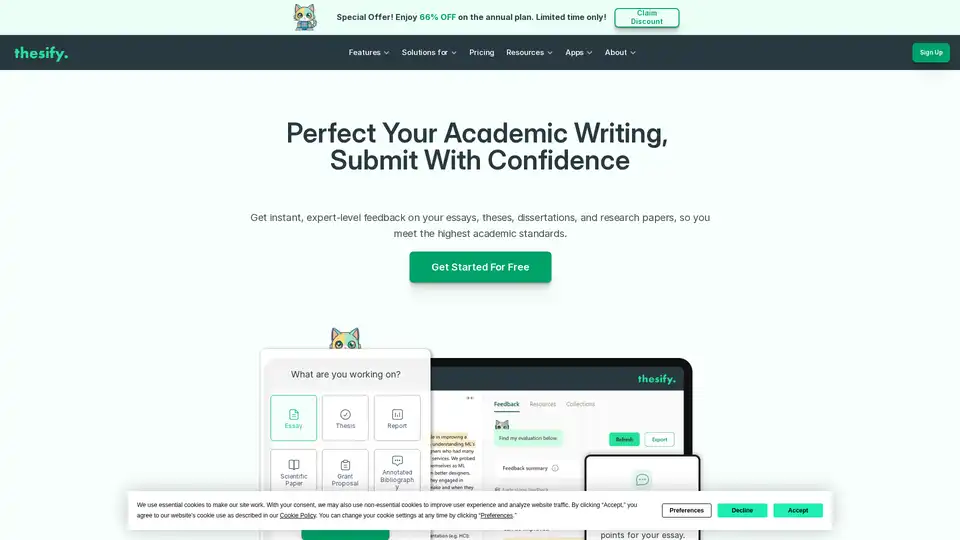
Thesify is an AI-powered academic writing assistant offering real-time feedback, citation assistance, and topic suggestions to enhance essays, theses, and research papers for students and academics.

OpenRead is an AI research platform providing AI analysis of over 300 million papers for scientific discovery, market research, and more. Seamless research experience in one place.

Paperguide is an AI research assistant that helps you find & analyze research papers, manage references, get research-backed answers, and write documents faster.
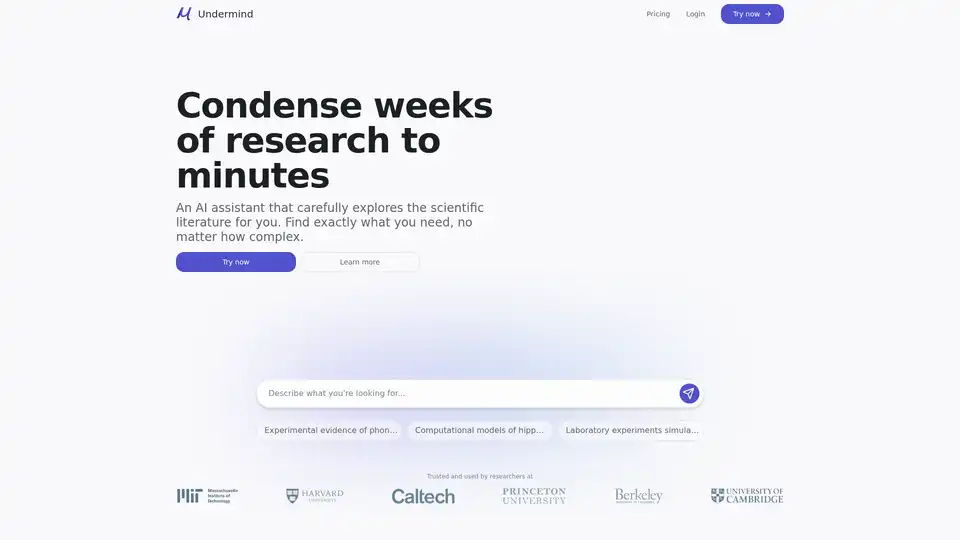
Undermind is an AI-powered research assistant that autonomously reads hundreds of scientific papers to deliver precisely relevant insights, condensing weeks of research into minutes.
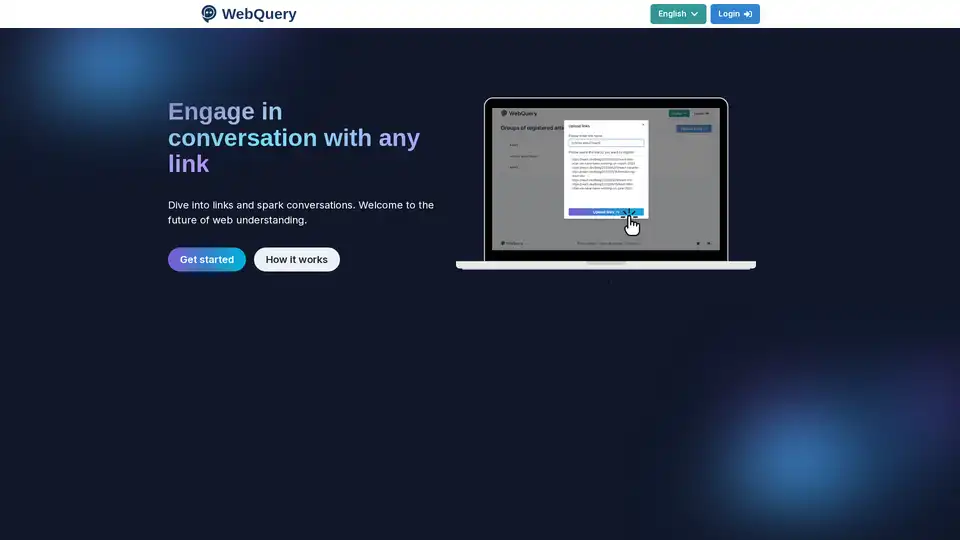
WebQuery is an AI-powered tool that lets you upload web links, register articles, and chat with content using ChatGPT for quick insights and deep understanding without full reading.
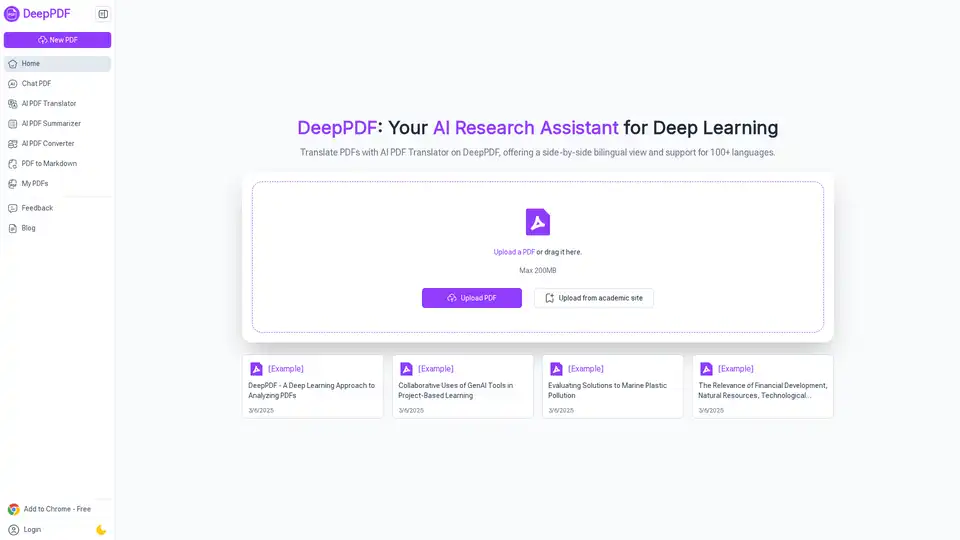
DeepPDF is an AI-powered research assistant for PDFs, featuring chat interactions, summaries, translations, and analysis of key terms, images, and formulas to streamline deep learning and document handling.
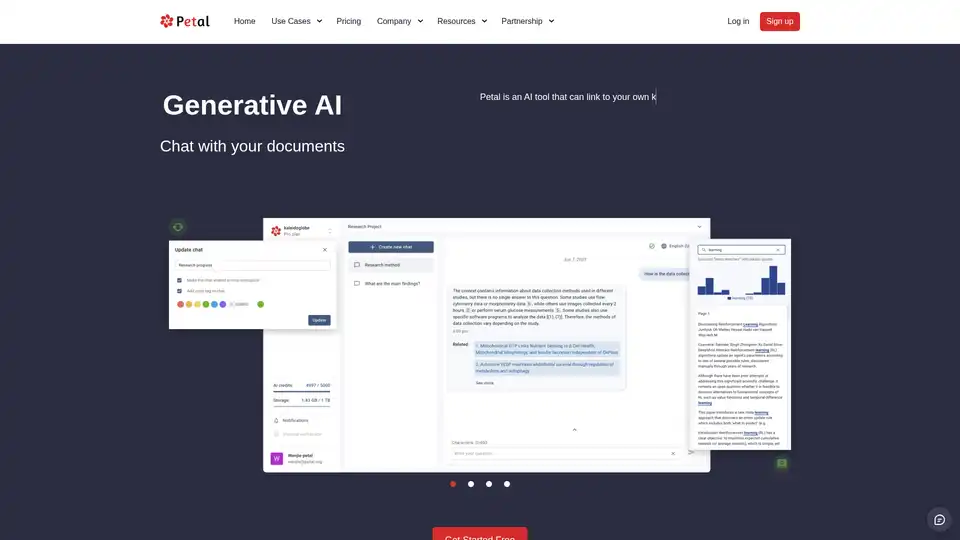
Petal is an AI-powered platform for chatting with documents, providing accurate answers, summaries, translations, and collaboration tools. Ideal for researchers in academia, R&D, and industry to analyze and organize knowledge efficiently.
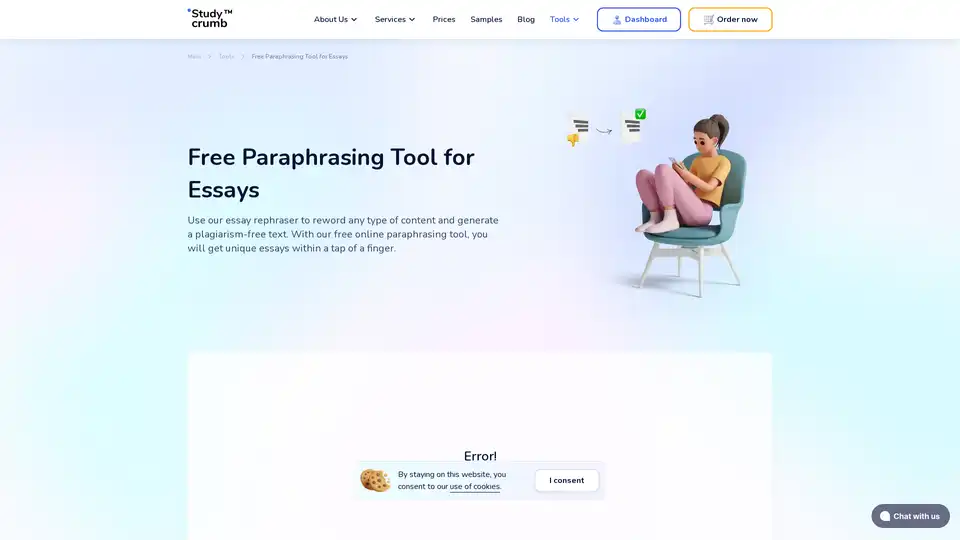
StudyCrumb’s essay rephraser is a high-end tool that will help you paraphrase any sentence, paragraph or article in seconds. Best paraphrasing tool you can get.
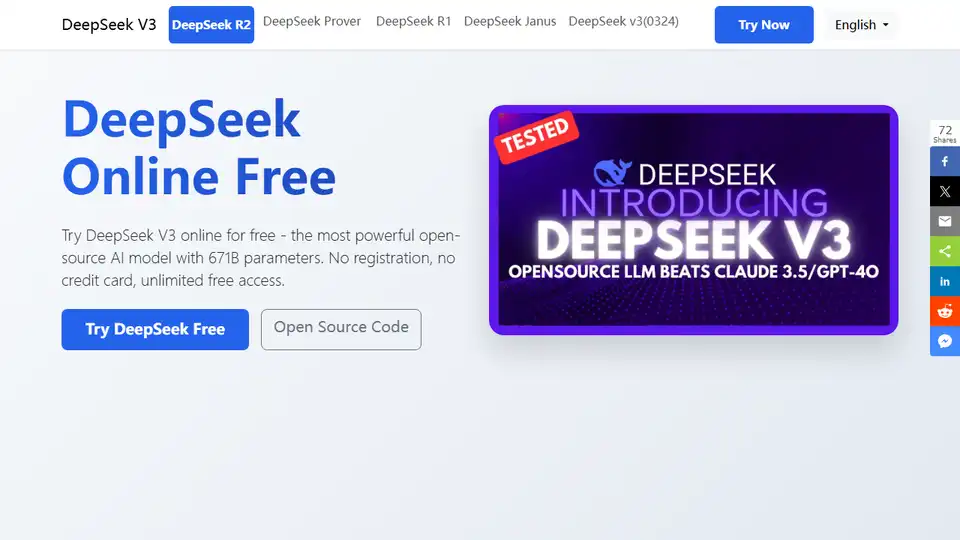
Try DeepSeek V3 online for free with no registration. This powerful open-source AI model features 671B parameters, supports commercial use, and offers unlimited access via browser demo or local installation on GitHub.

Thesify is an ethical AI tool designed to improve academic writing by providing real-time feedback on essays, theses, and research papers, ensuring high academic standards.

VortiX is an AI-powered search engine designed for scientific research. Find relevant academic papers, generate summaries, and synthesize insights to accelerate your research process.
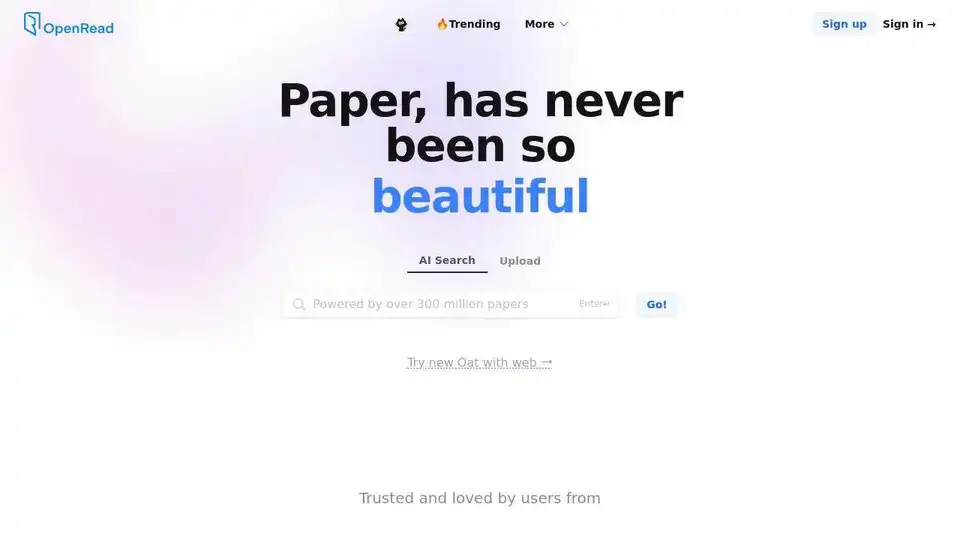
OpenRead is an AI research platform providing access to over 300 million papers with AI analysis for scientific discovery, market research, and more.
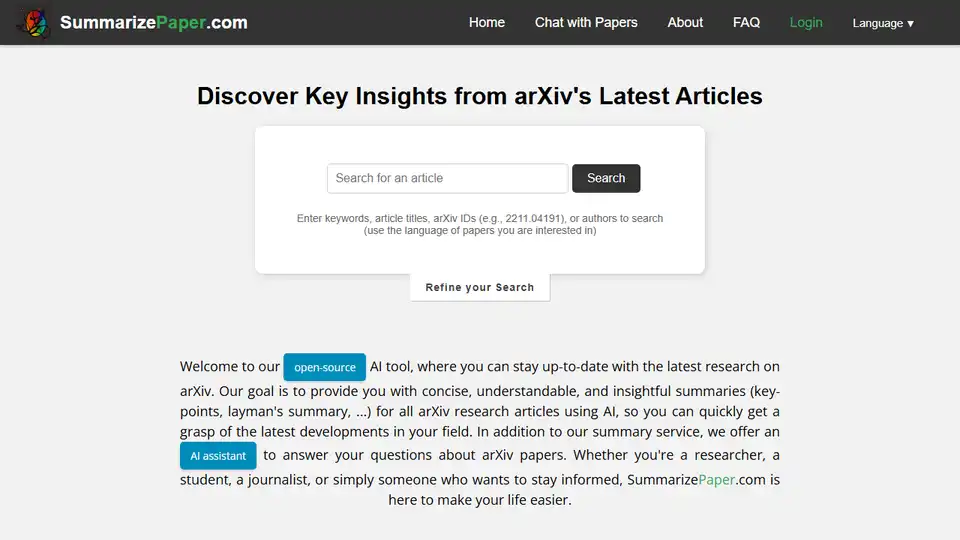
SummarizePaper.com uses AI to provide concise summaries and an AI assistant for arXiv papers, making research accessible to researchers, students, and more.

Homeworkify is a free AI-powered homework helper providing instant Q&A with step-by-step explanations. Get homework support across multiple subjects without login.
